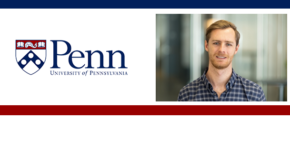 Are tuition-free eligible academic programs working as intended or do they need updates?
Are tuition-free eligible academic programs working as intended or do they need updates?
Daniel Sparks, postdoctoral fellow in economics and education at the University of Pennsylvania, leads this exploration.
Daniel Sparks is a postdoctoral fellow in economics and education at the University of Pennsylvania. His research focuses on higher education finance and policy.
An Exploration of State Free College Policies
To combat rising college costs and student debt, more than half of states have implemented statewide college promise programs. While operating with similar intent to improve college affordability, these tuition-free college policies vary across states in design and eligibility criteria, such as whether community and four-year college students and students from all income backgrounds are eligible. In an effort to increase both college enrollment and the supply of credentialed workers in high-demand fields, at least 9 states have now implemented statewide promise programs that limit eligibility to students pursuing degrees in vocationally-oriented fields. This type of program design provides students direct financial incentives to enroll in workforce-related programs, but renews questions around which types of programs constitute workforce education and the potential tradeoffs of encouraging students to enroll in only some programs and degrees versus others.
To better understand how workforce programs are defined, I web scrape data tuition-free eligible academic programs across 9 states with recent promise initiatives requiring students to pursue career-focused programs. Eligible academic program data include Classification of Instructional Program codes, the colleges where each program are offered, and whether the program leads to a certificate, associate, or bachelor’s degree. I find that 60 percent of all eligible programs lead to certificates, 25 percent to associate degrees, and 15 percent to bachelor’s degrees. Health, business, information technology, mechanics and engineering account for roughly 70 percent of all eligible programs. By narrowly defining eligible program areas and limiting most eligible programs to sub baccalaureate certificates and degrees, most states included in this analysis omit programs with high earnings and wage growth potential and/or social value. In designing promise initiatives, policymakers should carefully consider the potential consequences of tying eligibility to the pursuit of more narrowly defined career-focused fields and ensure that students’ longer-term academic and labor market trajectories are strengthened through program design.
Read More:
The full research article can be found in the September/October 2024 issue of Change: The Magazine of Higher Learning.

